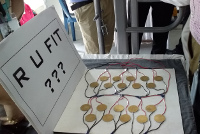While it's great that the GDPR regulations were created and the privacy of Users is now taken a wee bit more seriously, it gave rise to a poorly conceived idea of displaying notifications about cookies on websites.
Visit almost any website and you are shown a message that's meaningless to most Users. "We use cookies. Accept/Decline". For most Users, the reaction is "Uh...ok...what does this mean anyway?".
In the same way that popup's and ad's annoyed Users, now we have a perfectly legal regulation that created new popups that take up screen space.
Why should you be concerned?
Because some websites can access already-stored information to get to know more about you. According to Directive 2009/136/EC, Article 5(3):
More explanations here.
There was a P3P protocol idea floated long ago, but it didn't come through.
From a User eXperience point of view, people are annoyed with the banner, and would prefer to have an alternative.
So today I made it a point to give a feedback to Firefox and Chrome to provide a notification icon similar to the green HTTPS icon on the addressbar. If the User is concerned about cookies, they can click the icon to clear the cookies or revoke the website's privileges, instead of having to always click on an accept/decline button that takes up screen space on every single visit.
This isn't really a decision for a browser team to take, but perhaps it would be possible for them to convince website owners to put up metadata on their website that allows the browser to know that it needs to display an icon on the addressbar. Or perhaps if the browser detects the notification popup, then instead of displaying the popup, it could substitute the popup with the notification icon on the addressbar.
Visit almost any website and you are shown a message that's meaningless to most Users. "We use cookies. Accept/Decline". For most Users, the reaction is "Uh...ok...what does this mean anyway?".
In the same way that popup's and ad's annoyed Users, now we have a perfectly legal regulation that created new popups that take up screen space.
Why should you be concerned?
Because some websites can access already-stored information to get to know more about you. According to Directive 2009/136/EC, Article 5(3):
"Member States shall ensure that the storing of information, or the gaining of access to information already stored, in the terminal equipment of a subscriber or user is only allowed on condition that the subscriber or user concerned has given his or her consent..."
More explanations here.
There was a P3P protocol idea floated long ago, but it didn't come through.
From a User eXperience point of view, people are annoyed with the banner, and would prefer to have an alternative.
So today I made it a point to give a feedback to Firefox and Chrome to provide a notification icon similar to the green HTTPS icon on the addressbar. If the User is concerned about cookies, they can click the icon to clear the cookies or revoke the website's privileges, instead of having to always click on an accept/decline button that takes up screen space on every single visit.
This isn't really a decision for a browser team to take, but perhaps it would be possible for them to convince website owners to put up metadata on their website that allows the browser to know that it needs to display an icon on the addressbar. Or perhaps if the browser detects the notification popup, then instead of displaying the popup, it could substitute the popup with the notification icon on the addressbar.









































